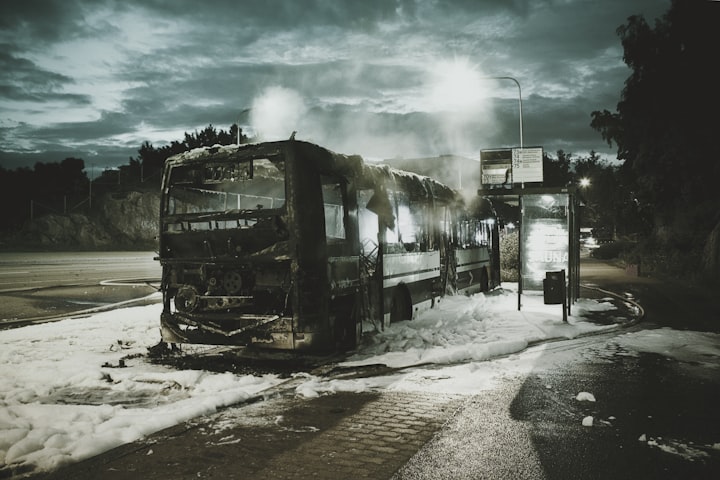
There are British serial killers whose names have played a significant role in popular culture. Hindley and Brady. Fred and Rose West. Harold Shipman. However, many people have never heard of one of the most prolific British serial killers of the past century: Bruce George Peter Lee. He committed a series of horrific crimes in northern England but always managed to escape the widespread infamy of his more notorious counterparts. Why?
Part of the answer lies with one of those murderous counterparts: Peter Sutcliffe, the Yorkshire Ripper. Sutcliffe was active in the North at the same time as Lee and drew all the attention to himself. But even his method of killing favored Lee's avoidance of the limelight. Instead of being a murderer or sexual sadist, Lee's chosen method of attack was arson. He seemed to be motivated more by a compulsion to ignite flames than by a specific urge to kill.
Lee, formerly known as Peter Dinsdale before changing his name, is not as easily categorized as other serial killers. The case is too chaotic, too bizarre, too tragic, and Lee himself is an awkward, almost pitiable figure. That may be why he never became the infamous figure of dubious allure in the press.
THE MYSTERIOUS MASSACRE
On December 4, 1979, Edith Hastie and her sons were awakened in their Hull home by the smell and sound of fire. Someone had poured paraffin into their mailbox and set it alight. Her eldest son Charles, just 15 years old, acted quickly and pushed his mother out of an upstairs window. While she fell a few meters, he knew there was no other chance for her survival. Charles himself remained in the inferno to save two of his younger brothers. But that proved impossible. All three would die from their injuries. However, despite the horror of their deaths, the local community was anything but compassionate.
The police already knew the Hastie family as a "problem family" blamed for unruly behavior in the area. The boys' deaths did not prompt anyone to reconsider. "Never have I encountered such hatred and loathing towards a family," a detective recalled later.
The sheer number of people harboring resentment against the Hasties meant that everyone became a suspect. The police interviewed a large number of young people in the area and were stunned when one of those boys, Peter Dinsdale, casually admitted to being the arsonist. It turned out there was indeed a personal grudge—Dinsdale claimed to have engaged in sexual activity with one of the victims, Charles Hastie, who then tried to blackmail him for money. Moreover, Dinsdale had apparently been ridiculed by the family for daring to develop an interest in one of the female siblings, further intensifying his sense of humiliation.
It seemed like the case was closed. Dinsdale, who had a troubled childhood, appeared to have a below-average IQ, had a deformed arm and leg, and looked like a social outcast who had launched a murderous attack on a family. But that was far from the whole story.
THE UNEXPECTED CONFESSION
Just as detectives thought they could close the case, Dinsdale revealed that the fire at the Hastie's house was only the last of many arson attacks. He had committed his first at just 12 years old when he set fire to the home of a classmate named Richard Ellerington. Almost the entire family, including young Richard, perished in the blaze.
A few weeks later, Dinsdale struck again at the house of a man named David Brewer, who was resting at home after a work accident. Brewer had briefly left the living room, only to return and find it engulfed in flames. His clothes caught fire, and he was seen running across the street in agonizing despair. Brewer died from his injuries.
According to Dinsdale's shocking, unsolicited statement to the police, he continued to set houses on fire in the following years, killing men, women, and children. Each incident had been dismissed by authorities as an accident, allowing Dinsdale to indulge in his mania. He claimed that the urge had almost spiraled out of control, and he knew he was ready for a new attack when his fingers started tingling.
Dinsdale, who changed his name to Bruce George Peter Lee in honor of martial arts icon Bruce Lee, was ultimately convicted of manslaughter rather than murder and committed to a hospital indefinitely due to his mental state.
A SERIAL ARSONIST?
Controversy has followed his case ever since, with some believing that he falsely confessed to some arsons. One of his most egregious apparent crimes—an attack on a nursing home resulting in multiple deaths—was later deemed an accident, reducing the number of his victims.
But despite debates about what exactly he did and the glaring lack of public awareness about his crimes, his place as one of Britain's worst serial killers cannot be denied. The man calling himself Bruce George Peter Lee once said, "I am dedicated to fire and I despise people." He proved that—with horrifying consequences.
About the Creator
Emma
I'm a passionate storyteller.With every word I put to paper, I aim to evoke emotions, stimulate thoughts, and take readers on a journey they won't soon forget. Stories have the power to connect people and offer them an escape from reality






Comments
There are no comments for this story
Be the first to respond and start the conversation.